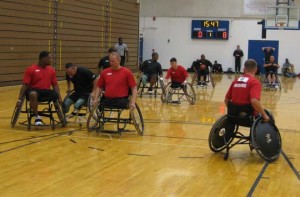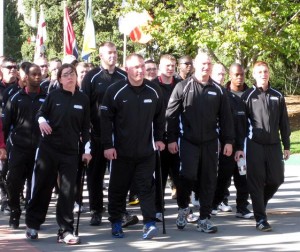By BG Gary Cheek, WTC Commander
The first competitions of the Warrior Games started last night, and if they are any indication, we are in store for some spirited and highly competitive events. It is great to see our Soldiers so pumped up and determined to win.
Seated volleyball was the first competition. The Army fielded strong teams, as did the other services, which led to some exciting and well-played games. The level of enthusiasm in the sports center was truly impressive, and everyone got caught up in the excitement. There was lots of friendly banter back and forth between the services, but it was also clear that underneath the competition was a true sense of camaraderie. I was proud to see that the true spirit of the Warrior Games was on display. I was especially proud of our Army athletes who stepped up their level of play to meet some tough teams head-on, as well as our Soldiers who cheered on their comrades, drowning out the shouts of the other services.
I left the seated volleyball competition thinking it would be tough to match that level of excitement on the court and in the stands, but the Army didn’t disappoint. They were just as determined and just as tenacious on the court. Because the team was made up of Soldiers from around the country, they had never competed or even practiced together before their match but they were a team in every sense of the word. Like their teammates in volleyball, they rose to the challenge, winning a game against the Navy and holding their own against an experienced Marine Corps team.
Win or lose, I saw the fighting spirit of the Army in full force last night and it was impressive.

The Army wheelchair basketball team moves the ball down the court in their game against the Marines.







